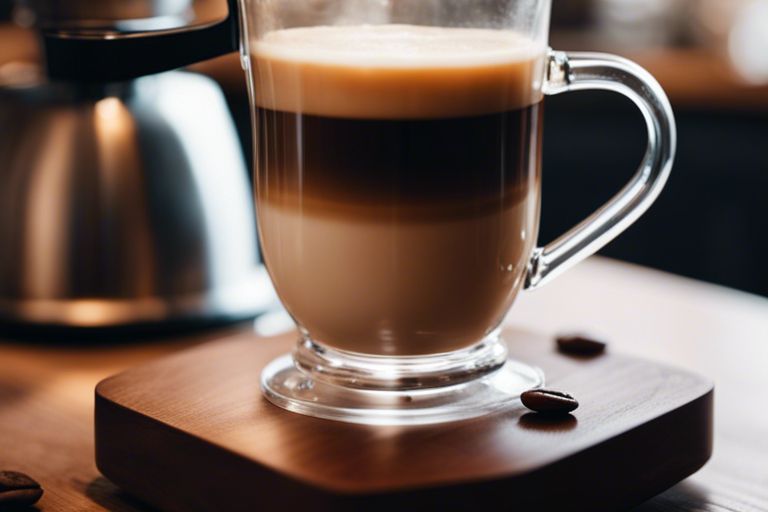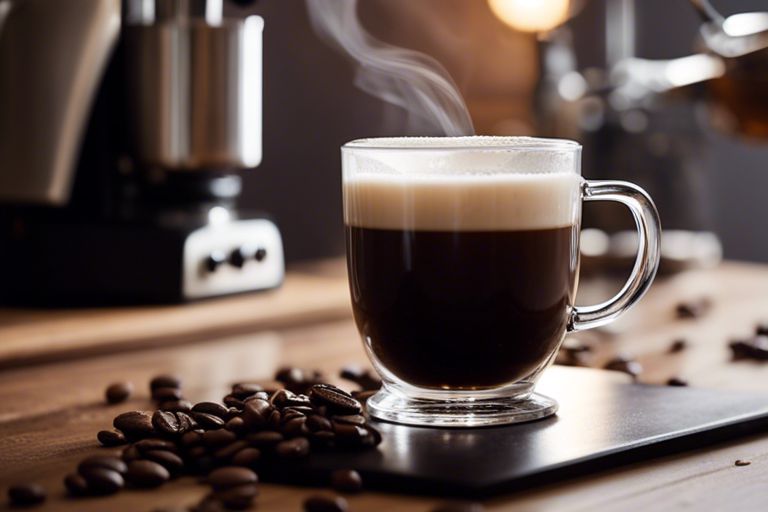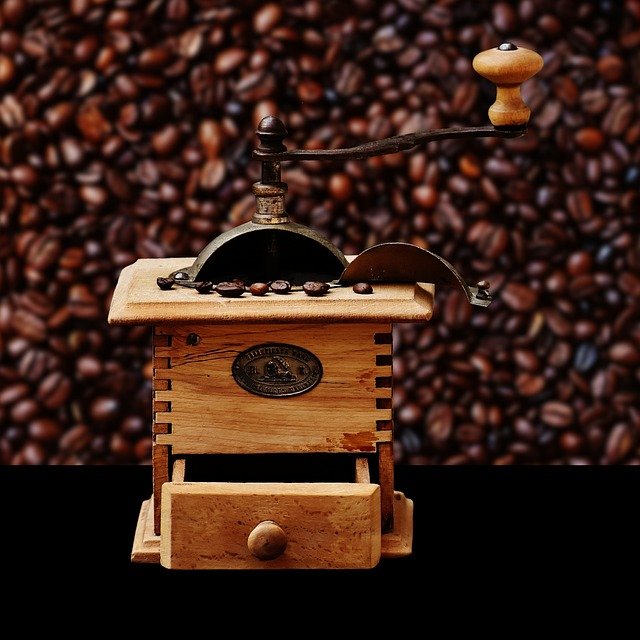Guide yourself through the art of brewing the perfect cup of black coffee at home with our expert tips and techniques. While it may seem simple enough, achieving that rich and bold flavor that you love can be a delicate process that requires precision and practice. Whether you’re a casual coffee drinker or a connoisseur, mastering the art of brewing black coffee is necessary for starting your day off right.
From selecting the best quality coffee beans to mastering the brewing methods, there are several factors to consider when making a cup of black coffee that truly stands out. In this comprehensive guide, we will explore everything from the type of beans to the water temperature and grind size that will elevate your coffee experience. Say goodbye to bland and bitter brews, and hello to a perfect cup of black coffee that will tantalize your taste buds.
Whether you prefer a pour-over, French press, or drip coffee maker, our ultimate guide has you covered with step-by-step instructions and helpful tips to ensure that your at-home coffee brewing game is on point. Discover the secrets to unlocking the full flavor potential of your coffee beans and impressing your friends and family with your newfound barista skills. For more detailed instructions on how to make black coffee that tastes good, check out How to Make Black Coffee that Tastes Good.
Key Takeaways:
- Quality of Coffee Beans: The key to brewing the perfect cup of black coffee lies in starting with high-quality coffee beans.
- Grind Size and Consistency: Consistent grind size is crucial for flavor extraction. Adjust the grind size based on your preferred brewing method.
- Water Temperature and Ratio: Proper water temperature (195-205°F) and coffee-to-water ratio (1:16) are imperative for a well-extracted cup of black coffee.
- Brewing Time: The optimal brewing time for black coffee is generally between 4 to 6 minutes, but this can vary based on your brewing method and personal taste preferences.
- Experiment and Enjoy: Don’t be afraid to experiment with different brewing methods, bean origins, and flavor profiles to find the perfect cup of black coffee that suits your palate.
Unveiling the Beans: A Voyage from Plant to Cup
One of the most crucial elements in brewing the perfect cup of black coffee is selecting the right type of coffee beans. There are a variety of coffee beans available, each with its own distinct characteristics that influence the flavor of the final brew. Understanding the different types of coffee beans and their unique traits is vital for any coffee enthusiast looking to elevate their coffee-making experience.
Types of coffee beans and their characteristics
- Arabica: Known for its smooth, refined flavor with a hint of sweetness. It has a higher acidity level and is commonly grown at higher altitudes.
- Robusta: Recognized for its strong, bold flavor and higher caffeine content. It is more bitter compared to Arabica and is often used in espresso blends for its crema.
- Liberica: With a distinct woody and smoky flavor, Liberica beans are considered rare and are grown in specific regions like the Philippines.
- Excelsa: Offering a tart and fruity flavor profile, Excelsa beans are often used to add complexity to blends.
- Geisha: prized for its floral and tea-like characteristics, Geisha beans are highly sought after by coffee connoisseurs for their unique flavor profile.
After exploring the various types of coffee beans, it becomes evident that the choice of beans plays a significant role in determining the flavor profile of your coffee. Experimenting with different types of coffee beans can help you discover your preferred taste preferences and enhance your coffee brewing skills.
The impact of bean origin on flavor
With coffee being grown in different regions around the world, each with its unique climate, soil, and elevation, the origin of the coffee beans has a profound impact on the flavor profile of the coffee. The characteristics of the soil, the amount of rainfall, and the altitude at which the beans are grown all contribute to the distinct flavors and aromas present in the final cup of coffee.
Characteristics like altitude, soil composition, and climate can significantly influence the taste of the coffee beans. For example, beans grown at higher altitudes tend to have a more complex flavor profile with bright acidity, while those grown at lower altitudes may exhibit a more mellow and balanced taste. Understanding the impact of bean origin on flavor can help you appreciate the nuances of different coffee beans and make informed choices when selecting beans for your brew.
The Grinder: Your Key to Freshness
The importance of a quality grinder
Any coffee lover knows that the key to a perfect cup of black coffee lies in the freshness of the grind. Whether you prefer a coarse or fine grind, having a quality grinder is crucial to unlock the rich flavors and aromas hidden in your coffee beans. Investing in a good grinder ensures that you have control over the consistency of the grind, leading to a more balanced and flavorful brew.
Quality grinders offer precision and consistency in grinding, which is crucial for extracting the best flavors from your coffee beans. Blade grinders may seem convenient, but they often result in uneven grounds that can lead to a bitter or sour taste in your coffee. Burr grinders, on the other hand, crush the beans between a moving wheel and a non-moving surface, resulting in a uniform grind size that is ideal for brewing a delicious cup of black coffee.
Having a quality grinder also allows you to adjust the grind size according to your brewing method. Whether you prefer a French press, pour-over, or espresso, a good grinder gives you the flexibility to experiment with different grind sizes and brewing techniques to find the perfect balance of flavors in your cup of black coffee.
Comparing blade and burr grinders: Pros and cons
| Blade Grinders |
Burr Grinders |
| Pros: |
Pros: |
| – Affordable |
– Consistent grind size |
| – Compact size |
– Adjustable grind settings |
| – Easy to use |
– Preserves the aroma and flavor of coffee beans |
| Cons: |
Cons: |
| – Inconsistent grind size |
– Higher price point |
| – Generates heat that can alter the flavor of coffee |
– Larger footprint |
| – Can cause static cling leading to a messy cleanup |
– More complex to operate |
When comparing blade and burr grinders, it’s clear that burr grinders come out on top in terms of consistency, grind quality, and overall flavor preservation. While blade grinders may be more affordable and compact, they fall short in delivering a uniform grind size and can affect the taste of your coffee due to inconsistent grounds and heat generation. On the other hand, burr grinders offer adjustable grind settings, uniform particle size, and better aroma retention, making them the preferred choice for coffee enthusiasts who seek the perfect cup.
Mastering the Grind: Size Matters
Understanding grind sizes and their effects on taste
All coffee lovers know that the grind size of your coffee beans plays a crucial role in the taste of your final brew. The grind size determines the surface area of the coffee that comes into contact with water during the brewing process, affecting the rate of extraction and ultimately, the flavor of your coffee. Different brewing methods require different grind sizes to achieve the perfect cup.
For example, a coarse grind is ideal for methods like French press, where the coffee grounds are steeped in hot water for an extended period. On the other hand, a fine grind is more suitable for espresso machines, where the water is forced through the grounds quickly. Finding the right grind size for your preferred brewing method can enhance the nuances of the coffee’s flavor profile and ensure a consistent and satisfying cup every time.
Experimenting with different grind sizes and observing the taste differences can help you fine-tune your brewing technique and elevate your coffee drinking experience. Do not forget, a small adjustment in grind size can have a significant impact on the flavor, so don’t be afraid to explore and find what works best for your palate.
Tips for achieving the perfect grind at home
In terms of grinding coffee beans at home, a few tips can make all the difference in the quality of your brew. Investing in a high-quality burr grinder is important for achieving a consistent grind size, which is key to extracting the optimal flavors from your coffee beans. Burr grinders offer more control over the grind size and produce less heat, preserving the freshness of the beans.
- Adjust the grind size based on your brewing method
- Grind the coffee beans just before brewing
- Clean your grinder regularly to prevent build-up
Following these tips will ensure that you can consistently produce a flavorful and aromatic cup of black coffee at home. The key is to pay attention to the grind size, as it can make a world of difference in the taste of your coffee. Any deviation in the grind size or quality can impact the overall flavor profile of your brew, so it’s worth mastering this aspect of coffee brewing.
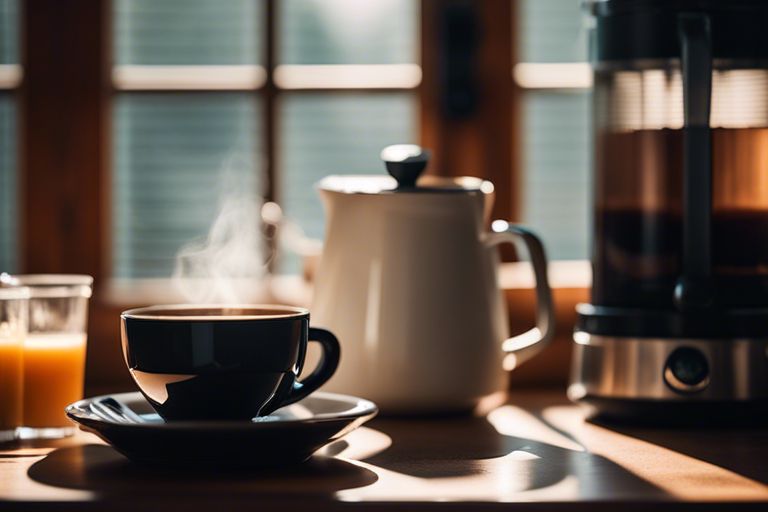
The Water: A Critical Ingredient Often Overlooked
The role of water quality in coffee brewing
Ingredient: As far as brewing the perfect cup of black coffee at home, the quality of water you use is just as important as the coffee beans themselves. Water makes up the majority of your brewed coffee, so any impurities or off-flavors in the water will directly impact the taste of your final cup. Using clean, filtered water free of any strange odors or tastes is crucial for extracting the full flavors and aromas from your coffee beans.
Ideal water temperature for black coffee extraction
| Water Temperature |
Effect on Extraction |
| Below 195°F (90°C) |
Weaker extraction, underdeveloped flavors |
| 195°F – 205°F (90°C – 96°C) |
Optimal extraction, balanced flavors |
| Above 205°F (96°C) |
Bitter, over-extracted coffee |
Water: The ideal water temperature for black coffee extraction falls between 195°F to 205°F (90°C to 96°C). This temperature range allows for proper extraction of the coffee grounds without scorching them, resulting in a well-balanced cup with optimal flavors and aromas.
Ideal water temperature for black coffee extraction
| Water Temperature |
Effect on Extraction |
| Below 195°F (90°C) |
Weaker extraction, underdeveloped flavors |
| 195°F – 205°F (90°C – 96°C) |
Optimal extraction, balanced flavors |
| Above 205°F (96°C) |
Bitter, over-extracted coffee |
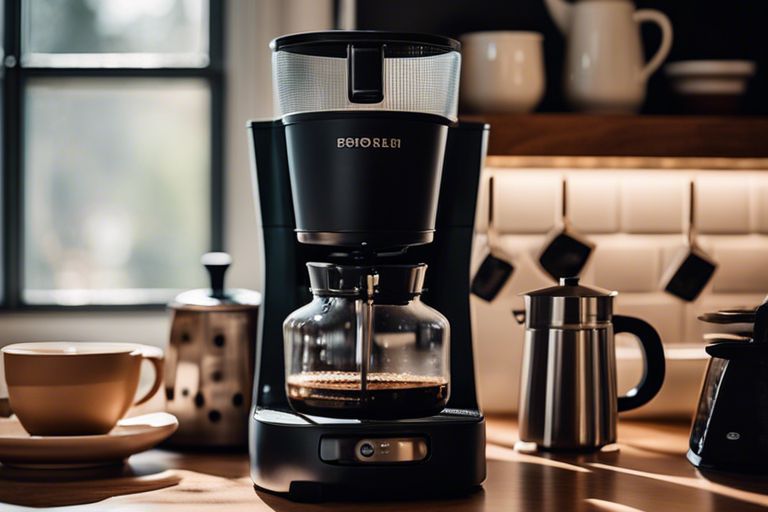
The Equipment: Choosing Your Brewing Partner
Keep in mind that the brewing method you choose can greatly impact the taste and overall experience of your black coffee. There are several popular brewing methods to consider, each offering a unique way to extract the flavors from your coffee beans. Whether you prefer a pour-over, French press, AeroPress, or a classic drip coffee maker, selecting the right brewing partner is crucial to achieving the perfect cup of black coffee at home.
Overview of popular brewing methods for black coffee
Overview of popular brewing methods for black coffee includes the pour-over method, French press, AeroPress, and drip coffee maker. Each method has its unique brewing process that affects the flavor and strength of the coffee.
Pros and cons of each brewing method
| Pour-Over |
French Press |
| Pros: Clean taste, control over brewing time |
Pros: Rich flavor, full-bodied coffee |
| Cons: Time-consuming, requires practice |
Cons: Sediment in coffee, can be gritty |
| Pros: Portable, easy cleanup |
Pros: No need for filters, visually appealing |
| Cons: Single-serve, not ideal for large batches |
Cons: Requires coarse grind, steeping time |
For a more detailed look at the pros and cons of each brewing method, refer to the table below. Understanding these key points can help you make an informed decision based on your preferences and lifestyle.
Stovetop espresso makers are a popular choice for those who enjoy the rich, bold flavor of espresso without investing in a full espresso machine. It is important to note that stovetop espresso makers operate under pressure, so it’s crucial to follow the manufacturer’s instructions carefully to avoid accidents. The positive side of stovetop espresso makers is that they are affordable, easy to use, and produce a concentrated coffee that can be enjoyed on its own or used as a base for other coffee beverages.
The Brewing Process: A Step-By-Step Guide
Once again, brewing the perfect cup of black coffee at home requires attention to detail and a methodical approach. The brewing process can significantly impact the taste and aroma of your coffee, so it’s crucial to follow a step-by-step guide for consistent results. Below is a breakdown of the brewing process to help you achieve that perfect cup every time.
Preparatory steps for all brewing methods
The key to brewing a great cup of black coffee starts with the preparatory steps that are common across all brewing methods. Begin by selecting high-quality, fresh coffee beans and grinding them to the appropriate coarseness just before brewing. Use filtered water to avoid any unwanted flavors in your coffee, and make sure your brewing equipment is clean to prevent any off-flavors. Preheating your equipment can also help maintain the optimal brewing temperature. Next, measure your coffee grounds based on your preferred coffee-to-water ratio. A general guideline is to use 1 to 2 tablespoons of coffee per 6 ounces of water, but you can adjust this ratio to suit your taste preferences. Boil the water to the right temperature for your brewing method – around 195°F to 205°F is ideal for most coffee brewing techniques. Finally, ensure you have all the necessary equipment ready, including a brewer, filters, kettle, and timer, before starting the brewing process.
Detailed guidelines for each equipment type
Little details can make a big difference in the way your coffee turns out, depending on the brewing equipment you use. Whether you prefer a French press, pour-over, AeroPress, or drip coffee maker, each method requires specific steps to achieve the best results. For example, with a French press, steep the coffee grounds in hot water for about 4 minutes before pressing down the plunger gently. On the other hand, pour-over enthusiasts should focus on pouring water in a slow, circular motion over the grounds for even extraction. Understanding the nuances of each brewing method can help you fine-tune your coffee-making process and elevate your home brewing experience. Experiment with different techniques and adjust variables like grind size, water temperature, and brewing time to customize your cup of black coffee to perfection. Remember to taste your coffee and take notes to track your preferences and replicate your favorite brews consistently. By mastering the detailed guidelines for each equipment type, you can unlock a world of flavors and aromas in every cup of black coffee you brew at home.
Fine-Tuning Your Brew: It’s All in the Details
After mastering the basics of brewing black coffee at home, delving into the intricacies of the brewing process can help elevate your coffee game to the next level. One crucial aspect to consider is the factors affecting brewing time and ratios.
Factors affecting brewing time and ratios
- Grind size: The grind size of your coffee beans plays a significant role in determining the brewing time. A finer grind size will extract flavors more quickly, while a coarser grind size will require a longer brewing time for optimal extraction.
- Coffee-to-water ratio: The ratio of coffee to water also impacts the brewing time. A higher coffee-to-water ratio will result in a stronger brew that may require a longer brewing time to balance the flavors.
- Brewing method: Different brewing methods, such as pour-over or French press, can affect brewing time. Each method requires specific attention to brewing time and ratios to achieve the perfect cup.
This detailed understanding of the factors influencing brewing time and ratios is necessary for fine-tuning your brewing process and achieving the perfect cup of black coffee at home.
Tips for adjusting variables to perfect your cup
- Experimentation: Don’t be afraid to experiment with different grind sizes and coffee-to-water ratios to find the perfect balance of flavors for your taste preferences.
- Consistency: Keep track of the variables you adjust during your brewing process so you can replicate your perfect cup of coffee consistently.
- Taste testing: Regularly taste your coffee as you adjust variables to identify the subtle differences in flavor profiles and determine the optimal brewing time and ratios for your palate.
Fine-tuning your brewing process through these tips will help you customize your coffee experience and ensure each cup is brewed to perfection.
With a keen eye on the variables influencing brewing time and ratios, and a willingness to experiment and taste test, you can take your home brewing skills to the next level and consistently enjoy a perfect cup of black coffee.
Cleaning and Maintenance: Ensuring Longevity
Not only is it crucial to brew a delicious cup of black coffee, but it’s also necessary to maintain and clean your brewing equipment to ensure its longevity. For a comprehensive guide on brewing the perfect cup of black coffee, check out How to Make the Perfect Cup of Black Coffee, Three Ways.
Best practices for cleaning your brewing equipment
Best practices for cleaning your brewing equipment include regular maintenance such as daily rinsing of your coffee maker, carafe, and filters. Make sure to deep clean your equipment weekly by using a mixture of water and vinegar to remove any mineral buildup. It’s also important to disassemble your equipment and clean all removable parts thoroughly to prevent any residue buildup that could affect the taste of your coffee.
Invest in a high-quality cleaning brush to reach all the nooks and crannies of your equipment, ensuring a thorough cleansing process. Additionally, always refer to the manufacturer’s instructions for specific cleaning guidelines for your brewing gear to maintain its optimal performance.
By following these cleaning best practices, you not only ensure the longevity of your brewing equipment but also guarantee that each cup of coffee you brew is as delicious as the last, free from any unwanted flavors or residues.
Maintenance routines to keep your coffee gear in top shape
Regarding maintenance routines to keep your coffee gear in top shape, consistency is key. Regularly inspect your equipment for any signs of wear and tear, and promptly address any issues to prevent further damage. Lubricate moving parts as needed to ensure smooth operation and extend the lifespan of your gear.
Additionally, store your equipment in a clean and dry environment to prevent dust accumulation and potential mold growth. Consider investing in a descaling agent to remove any mineral buildup in your coffee maker, enhancing its efficiency and longevity. Lastly, keep a detailed maintenance schedule to track cleaning and upkeep tasks, ensuring that your coffee gear remains in optimal condition for years to come.
Bear in mind, proper cleaning and maintenance routines are necessary for preserving the quality and performance of your brewing equipment. By incorporating these practices into your routine, you’ll not only enjoy delicious cups of black coffee but also extend the lifespan of your beloved gear.
Serving and Enjoyment: The Art of Presentation
Advice on cups and mugs for optimizing taste and temperature
For the ultimate coffee experience, choosing the right cup or mug is crucial. The material, shape, and size of your vessel can significantly impact the taste and temperature of your black coffee. Porcelain or glass cups are highly recommended as they do not alter the flavor of the coffee. Their thin walls also help in maintaining the ideal temperature of the coffee for a longer time. Keep in mind that a smaller cup will help retain heat better, while a wider rim allows for better aroma perception.
| Material |
Shape and Size |
| Porcelain or glass |
Smaller cup for better heat retention, wider rim for aroma |
Now, when it comes to mugs, ceramic mugs are a popular choice for black coffee. The thickness of ceramic helps in keeping the coffee warm for a more extended period. Opt for mugs with a comfortable handle and a wide base for added stability. Do not forget, the goal is to enhance your coffee-drinking experience by maintaining the optimal temperature and flavor profile.
Enhancing the experience with complementary food pairings
If you want to take your black coffee enjoyment to the next level, consider pairing it with complementary foods. The rich and bold flavors of black coffee pair perfectly with foods like dark chocolate, almond biscotti, or buttery croissants. These pairings can enhance the taste and create a delightful sensory experience that elevates your coffee ritual.
For a more savory pairing, try black coffee with aged cheese or a flaky, buttery pastry. The contrast of flavors can be incredibly satisfying and make your coffee break even more enjoyable. Experiment with different food combinations to find what works best for your palate and indulge in the decadent experience of savoring black coffee alongside a delightful treat.
For a truly indulgent experience, try adding a splash of cream or a sprinkle of cinnamon to your black coffee for a touch of richness and warmth. These simple additions can elevate the flavor profile and make your coffee break feel like a luxurious treat.
Expanding Your Coffee Palette: Exploring Variations
Many coffee lovers start their day with a classic black coffee, but there are so many ways to elevate your coffee experience and explore different flavor profiles. By diversifying your black coffee routine, you can discover new tastes and brewing methods that will excite your palate.
Ways to diversify your black coffee routine
Diversify your selection of beans: One of the most straightforward ways to explore variations in black coffee is by trying different types of coffee beans. Each region produces beans with unique flavors and aromas. Experiment with beans from Ethiopia for fruity and floral notes, or try Colombian beans for a balanced and mild taste. You can also explore single-origin beans to appreciate the distinct characteristics of coffee grown in specific regions.
Experiment with different brewing methods: Another way to diversify your black coffee routine is by experimenting with various brewing methods. While a classic drip coffee maker is convenient, try using a French press for a full-bodied cup or a pour-over for a clean and nuanced flavor. Cold brew is another popular method that offers a smooth and refreshing coffee experience, perfect for hot summer days.
Add flavor enhancers: For those looking to add a twist to their black coffee, consider using flavor enhancers like cinnamon, nutmeg, or flavored syrups. These additions can complement the natural flavors of the coffee or create new and exciting combinations. However, be cautious with sugar and cream as they can overpower the coffee’s original taste. Be mindful of, the goal is to enhance the coffee, not mask it.
FAQ
Q: Why is brewing the perfect cup of black coffee at home important?
A: Brewing the perfect cup of black coffee at home allows you to enjoy a superior quality, taste, and aroma without having to step out of your house. It also gives you full control over the brewing process, ensuring a consistent and personalized coffee experience every time.
Q: What equipment do I need to brew the perfect cup of black coffee at home?
A: To brew the perfect cup of black coffee at home, you will need a good quality coffee maker (such as a drip brewer or French press), fresh coffee beans, a grinder, a kettle, a scale, and a timer. These tools will help you achieve precision and excellence in your brewing process.
Q: How should I choose the right coffee beans for brewing black coffee at home?
A: When identifying coffee beans for brewing black coffee at home, consider factors such as the roast level (light, medium, dark), origin (single origin or blend), and freshness. Opt for high-quality, freshly roasted beans that suit your taste preferences to ensure a delicious and flavorful cup of coffee.
Q: What is the ideal water temperature for brewing black coffee at home?
A: The ideal water temperature for brewing black coffee at home is between 195-205°F (90-96°C). Maintaining this temperature range ensures proper extraction of flavors from the coffee grounds without scalding them, resulting in a well-balanced and aromatic cup of coffee.
Q: How can I enhance the flavor of black coffee brewed at home?
A: To enhance the flavor of black coffee brewed at home, you can experiment with variables such as grind size, brewing time, coffee-to-water ratio, and brewing methods. Additionally, practicing consistent brewing techniques, using freshly ground beans, and storing coffee properly will help elevate the overall flavor profile of your home-brewed black coffee.
Unlocking the Mystique – Exploring the Rich Flavor Profile of Black Coffee
Health Benefits Unveiled – How Black Coffee Boosts Your Well-being
From Bean to Cup – The Fascinating Journey of Black Coffee Production
Caffeine Chronicles – Understanding the Power and Appeal of Black Coffee
Black Coffee: Origins, Nutrition, and Health Benefits

